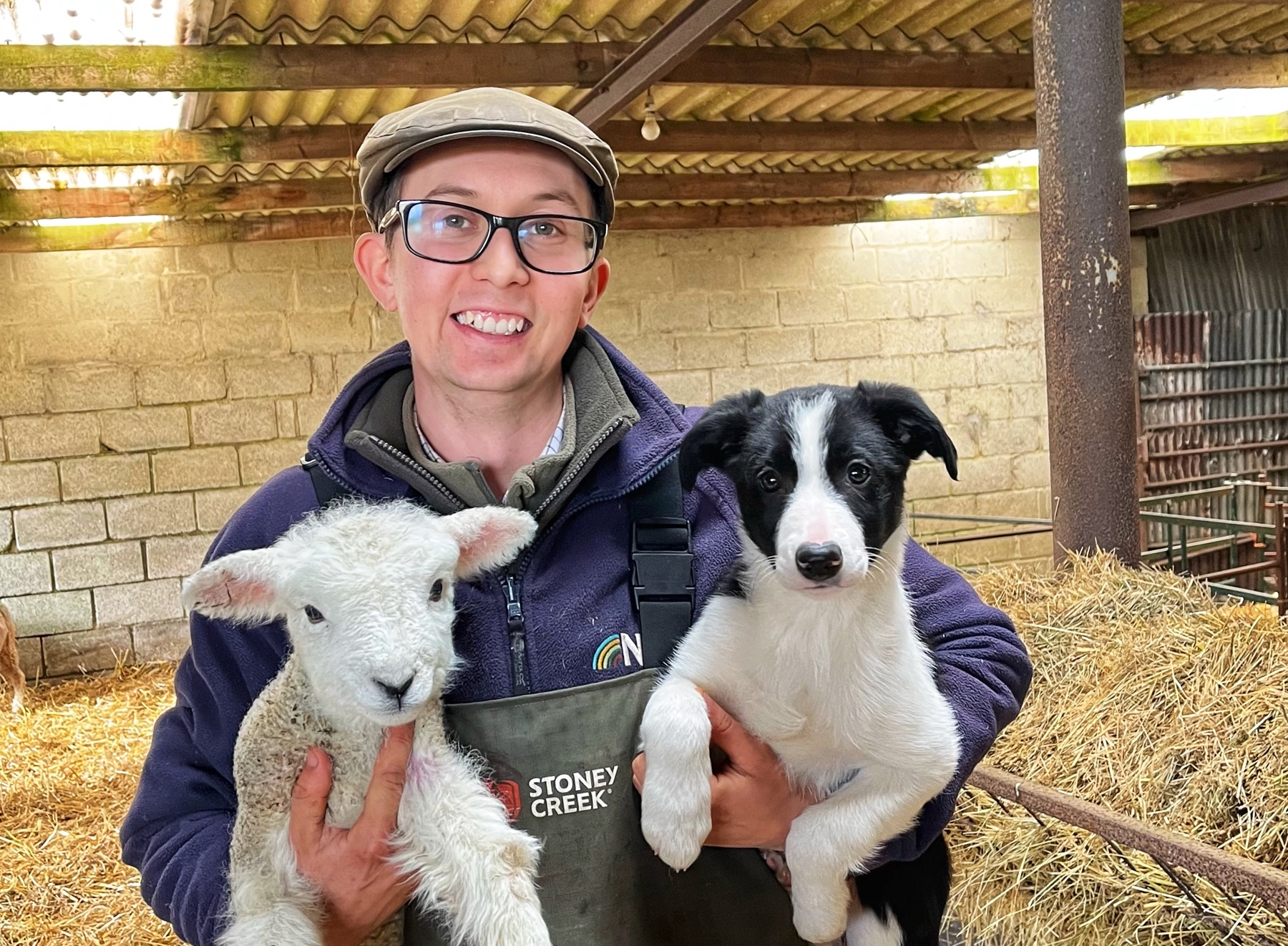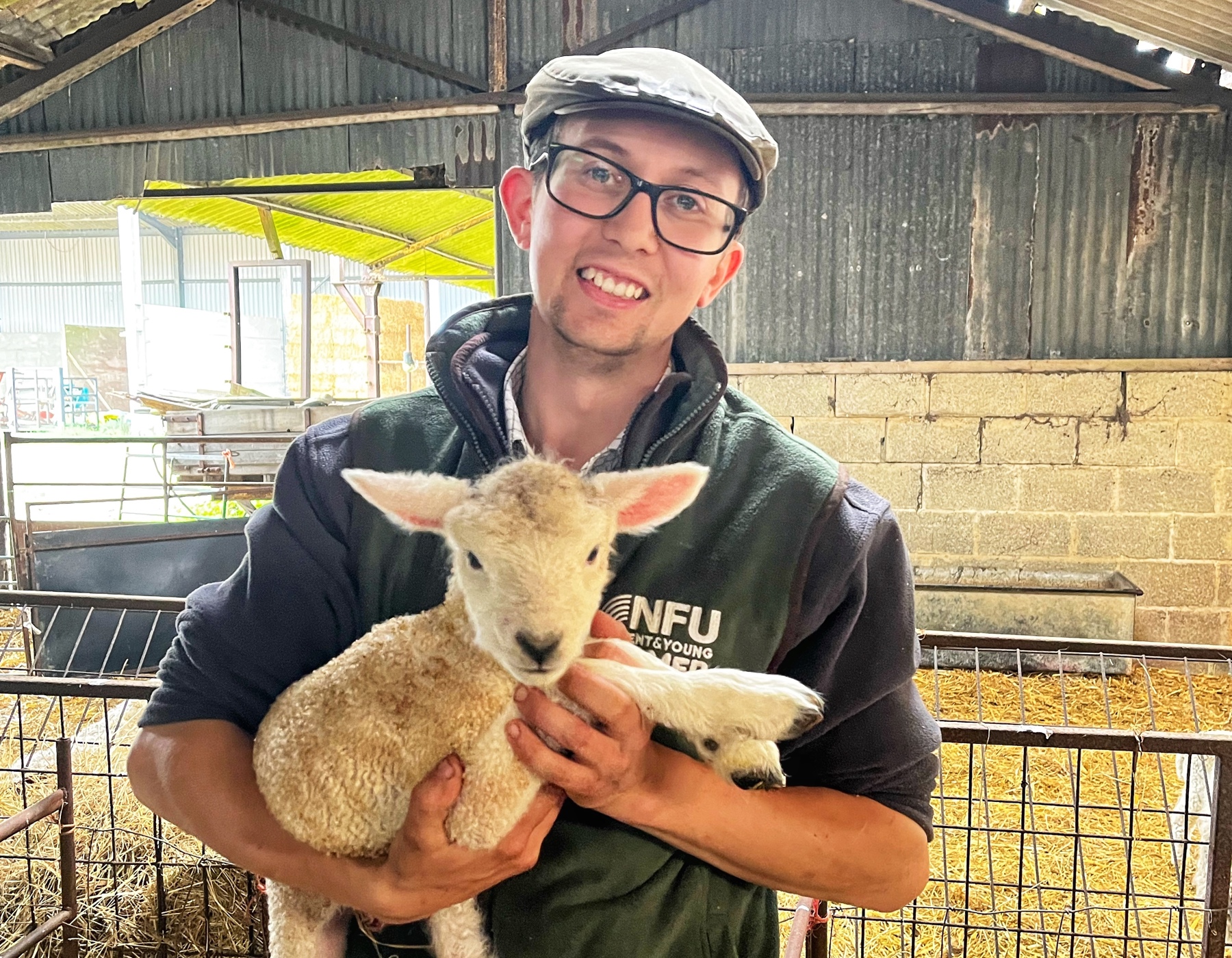Meet Karl Franklin: The volunteer teaching Cubs about farming
Karl Franklin is a first-generation sheep farmer and Cub volunteer. Each year, he brings Cubs to his fields and lambing shed to teach them about life on the farm. He tells us all about their farm visits and how he farms sustainably.

Nice to meet you, Karl. Could you tell us a bit about yourself?
Hi, I’m Karl Franklin and I’m a farmer from Oxfordshire. I’m a first-generation farmer, which means I don’t come from a farming background.
I trained as a chef when I left school, but in 2016, I left my chef career to start running a gardening business. Now, I’m working on the farm full time.
How did you get into farming?
I’ve always helped on the fields while working as a chef and running my gardening business, but I realised how much I enjoyed farming, looking after animals and being outdoors. I bought my first twelve sheep in 2015, shortly after I came back from the World Scout Jamboree in Japan.
I didn’t plan to become a farmer if I'm honest, it just happened. If you’d asked me when I was in school, or even when I was busy working as a chef, I’d never have thought I’d be a full-time farmer in six years. It was very gradual.
How do you fit volunteering around farming?
I love volunteering with Cubs each week after spending a day on the farm, and it's very easy to fit into my schedule. I know I've got to be done by 6pm on Monday and I look forward to helping at their sessions in the evening.
Unfortunately, I can’t volunteer at sessions through the month of lambing in April, as we’re so busy looking after the new lambs. Instead, I bring the Cubs to the lambing shed. They come down to the shed at least once during the month to see the lambs, learn about what I do and where their food comes from. They absolutely love it!
What do the Cubs learn about when they visit your farm?
Many of the Cubs live in towns and villages nearby, so being at the farm gives them a chance to get outdoors, learn about the countryside and find out about farming in their community.
This year, the Cubs hiked up to the farm in the middle of the lambing season and I explained all about how the lambing shed works.
The Cubs visited again when the lambs were slightly older, too. They really enjoyed seeing how the lambs had grown and running around in the field together. The Cubs greatly enjoyed the experience, and they’re keen to come back again next year. It’s great to give them the opportunity to see what happens behind the farm gate and be immersed in the farming process.
It’s quite handy that my partner is a Scout volunteer as well, because we’re both able to teach young people about the farm in different ways.
With my partner’s Scout group this year, we taught them about the farm in one of their sessions. We showed them photos of each different season on the farm, such as spring and autumn, and explained the different jobs I do as a sheep farmer during each season.

How were the Cubs able to visit the farm safely?
It can be a lot of work to get the Cubs there safely, but it’s worth it to see them enjoying themselves and learning about farming.
We make sure to keep the Cubs a safe distance from the sheep and remind them that they’re on a working farm, not a petting zoo. At petting zoos, the animals are used to being approached and fed, but it’s important to keep young people safely away from animals on a working farm.
We remind the Cubs to be quiet and sensible, respect the animals and remember the animals have an important job to do.
Do the farm visits go towards any badges?
Yes, we make sure their visit goes towards badges. Scouts work towards the Farming badge, and we’re working towards the Animal Carer badge with the Cubs.
We’re going to finish it next year, as we’re going to track a ewe (a female sheep) in the spring. I’m going to give weekly or monthly updates on where she is and what she’s doing.
How do you farm sustainably?
The most important thing for sustainability on a farm is soil. The more organic matter you can add to your soil, like waste from livestock and sheep, the more sustainable it is.
We do a few different things. Over the winter, we plant crops, like turnips. Rather than leaving the soil bare (which can wash away the good nutrients), we plant a crop in between our cereal crops (like wheat and barley), and I let the sheep graze there.
Grazing helps fatten the sheep and they leave natural fertiliser behind. The natural fertiliser helps the ground and stops us needing to use as much artificial fertiliser, which is worse for the environment.
Sheep are very useful when it comes to sustainability. As I said before, they graze arable crops, and of course, they help with the grass! Grass is fantastic at capturing carbon (it’s stored in the ground, instead of in our atmosphere), so the more grass the sheep eat, the more it grows, and the more carbon it captures.
As well as helping retain carbon within the ground, sheep also grow wool, which is one of the most sustainable and renewable products available.
Has modern technology helped or changed farming to make it more sustainable?
The actual farming systems have stayed very much the same. If you talk to the older generation, they’ll tell you that their fathers and grandfathers did the same thing, but modern technology has helped farming become more sustainable and efficient.
For example, when I view rams, I check a spreadsheet on their genetics, which helps us understand more about them and their family history.
The more technology we have, the more sustainable farming is. It helps us understand things we never could’ve before.
If you had to pick your favourite thing about farming, what would it be?
Lambing is the hardest part of my job, but it’s genuinely the most rewarding.
After being up at 3am with a ewe who’s struggling to give birth, going back later in the morning to see her up and about with a beautiful set of twins is the best feeling. It's so rewarding.
Karl posts about all things farming on his Instagram page, @the_pretend_farmer